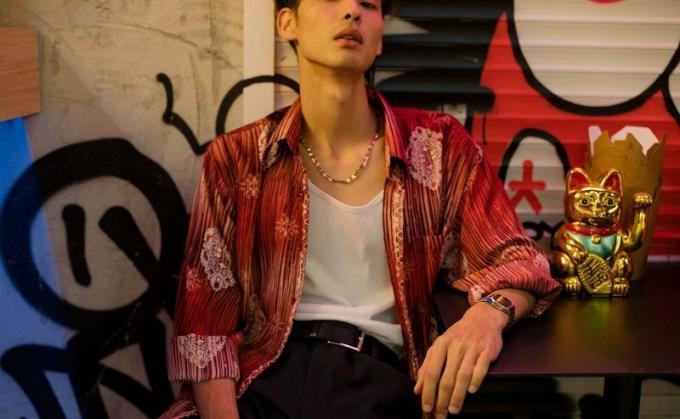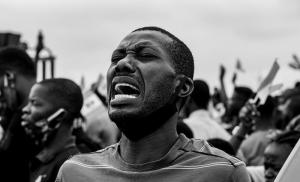Male Beauty Canons around the world
Human beings have always tended to code, and the case of ideal beauty is no different. Already in ancient Egypt it was established that the ideal proportions of the human body were 18 times its fist. In classical Greece, Polykleitos held that the ideal body contained seven times the head, while the Roman Vitruvius affirmed a little later that the ideal was actually 8 heads.
What follows from all this? Well, simply, that the ideal beauty varies depending on the historical moment and the place that codifies it. Because what do Paleolithic Venuses, which exalt a beauty based on the roundness and width of the body, have to do with the classical Greek canon? Well, actually: nothing.
History and the different cultures that have passed through it have had their own vision of what is beautiful and what is not, and they have not always coincided. And not only in terms of feminine beauty, but also in terms of the masculine ideal. Because, contrary to what is usually thought, men have always been (and, in fact, continue to be) subject to the cultural and temporal variables of aesthetic canons.
In this article we will briefly analyze the different canons of masculine beauty that we find today in different societies and cultures. In a world as highly globalized as ours, it may seem that the concept of beauty is also unified, but nothing is further from the truth. It has been shown that there are still aesthetic differences, the result of the historical and cultural evolution of the different peoples.
Canons of male beauty around the world: a complete globalization?
In 2015, the video that powered the digital platform Buzzfeed became a viral phenomenon. The video in question analyzed, based on surveys and studies, what was the ideal male prototype in each country. The experiment focused on a few states, such as Italy, Turkey, Nigeria or Australia.
The result made it very clear that, Despite the intense globalization in which we are immersed (and which is becoming more and more), the ideal of male beauty continues to change, depending on the place and the culture. For example, and according to the data from the study, comprehensive hair removal for men and a prototype have become fashionable in Turkey. of a man very similar to that of Turkish soap operas, while in India the ideal continues to be the typical actor of Bollywood. On the other hand, in Italy the concept of a bearded but well-groomed man predominates, who dedicates great care to his appearance. In other words, what the Italians call sprezzatura; an apparently bohemian and unkempt man but, deep down, he knows very well what he looks like (and spends a lot of time getting ready).
It is frequent, therefore, that the current masculine ideal of a country or region is related to national actors, models, singers or artists. In the UK, for example, the “Beckham” style is still in vogue: a tall blond man with a beard and many (many) tattoos. Another clear example is Korea, whose “pop” style has spread to almost all of Asia, and brings a man with delicate features and who uses makeup profusely to enhance his attractiveness.
From all this it can be deduced, as we have already pointed out, that the ideal of beauty is not completely subject to globalization, and that the traditional canons of each country still weigh heavily when judging what makes a man handsome or attractive man.
- Related article: "Anthropology: what is it and what is the history of this scientific discipline"
Asia and “de-masculinization”
In ancient China, the masculine ideal went through the containment of emotions and a suitably wide and strong body. According to Chinese studies professor Kam Louie of the Australian National University, what prevailed above all was the "wen-wu", that is, the combination of intellectuality (wen) and the martiality (wu). In other words, a cultured and intellectual man who, at the same time, knew how to handle weapons skillfully and had enormous military discipline. The "masculine" aspect was greatly reinforced during the People's Republic, to the detriment of any possibility of "feminization" of the Chinese man.
However, in recent years this ideal seems to be changing. At present, as we have already commented in the previous section, the “pop” man, influenced by Korean pop music, prevails. It is what has come to be called "soft masculinity", represented by a man without facial or body hair, thin and stylized and very focused on his self-image. To enhance it, this type of man does not give up makeup or cosmetic surgery.

This change in the ideal of Asian men has not been liked by everyone, and in China itself has appeared a movement that intends to return to "masculinize" the new generations, which has aroused harsh criticism.
- You may be interested in: "Masculine Beauty Canons and their historical evolution"
Africa and the survival of “tribal” beauty
Currently, there are still ancestral cultures that resist entering the wheel of globalization. We find many cases in Africa, where the hallmarks of some of its peoples still survive, and where unique canons of beauty can be traced.
An extraordinary case is the Bodi tribe in Ethiopia. And we say "extraordinary" because, in truth, the concept of masculine beauty in this culture has nothing to do with what we are used to in the West. Bodi men eat a high-calorie diet for months to gain excess weight (they triple their weight in no time). Why do they do it? Well, because the man with the greatest abdominal volume is the most handsome man and wins the hand of the most beautiful young woman in the tribe.
In our exacerbated cult society of toned bodies, which demonizes everything that has to do with body fat, the aesthetic canons of the Bodi are frankly surprising. And it is that we are so used to the idea of a "unique" beauty that we often forget that we are not, at all, the navel of the world.
Other African cases in which an absolutely tribal aesthetic predominates, which has nothing to do with the canons Westerners are the Karo men, also from Ethiopia, and the Wodeabé, located in the Sahel zone, on the limits of the Sahara. The former paint their entire body (including their faces) with white stripes and geometric figures. The latter (also known as bororo), similar to the Bodi, perform a ritual in which the women of the tribe choose the most beautiful man. To win the award, the Wodeabé paint their faces with yellow ocher and wrap their hair around a headband adorned with ostrich feathers. Black kohl serves to lengthen the shape of the nose and soften the lines of the face, which seems to be a symbol of beauty..
Wodeabé men take great care of their bodies and their image, much like a Westerner would. The dresses they use to exhibit themselves in the "contest" are the result of a year of work, and they are really showy and impressive. Dressed in this way, the Wodeabé men dance until dawn, contorting their bodies and performing a series of grimaces that emphasize his teeth and eyes, since their extreme whiteness is synonymous with loveliness.
A curious fact is that In many African tribes, the ideal of female beauty is a shaved head or very short hair., while, in peoples like the Masai, the most beautiful men are those who wear the longest hair, like a lion's mane, a symbol of beauty and power.
- Related article: "Aesthetic emotions: what are they and what effects do they have on the human mind"
The "modern" that comes from old
We have previously commented that, in the United Kingdom, the "ideal" man happens to have many tattoos on his body. This ideal is quite widespread in many countries of the world; You only have to see the fashionable actors to corroborate it.
But where do tattoos come from? Nobody ignores that, originally, they were a ritual symbol. In fact, the word tattoo comes from tattoo either tatau, the name given to these signs in the Maori language. The Maori are the native people of New Zealand who, more than 1,000 years ago, colonized the island from Polynesia. Among this town, the exhibition of tattoos all over the body was and is very common; It was precisely the sailors who arrived on the island in the 18th century who "exported" tattoos to Europe.
Maori men tattoo black lines and stripes on their faces, the traditional ta moko. Each tattoo is unique and there are no two men with the same drawing, so it becomes a symbol of identity. In addition to tattooing, Maori men perform the haka, the traditional dance that involves giving each other blows to certain parts of the body and, similar to the Wodeabé, stick out the tongue and open the eyes wide. eyes.
Definitely; the concept of ideal beauty is still in motion. In fact, it does not seem likely that there will ever be such a thing as a “unique beauty”, no matter how much globalization there is. Much better this way, since, after all, what is truly beautiful passes through diversity.

